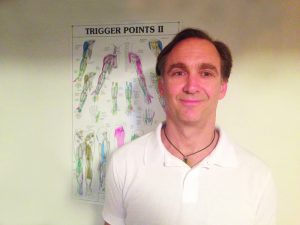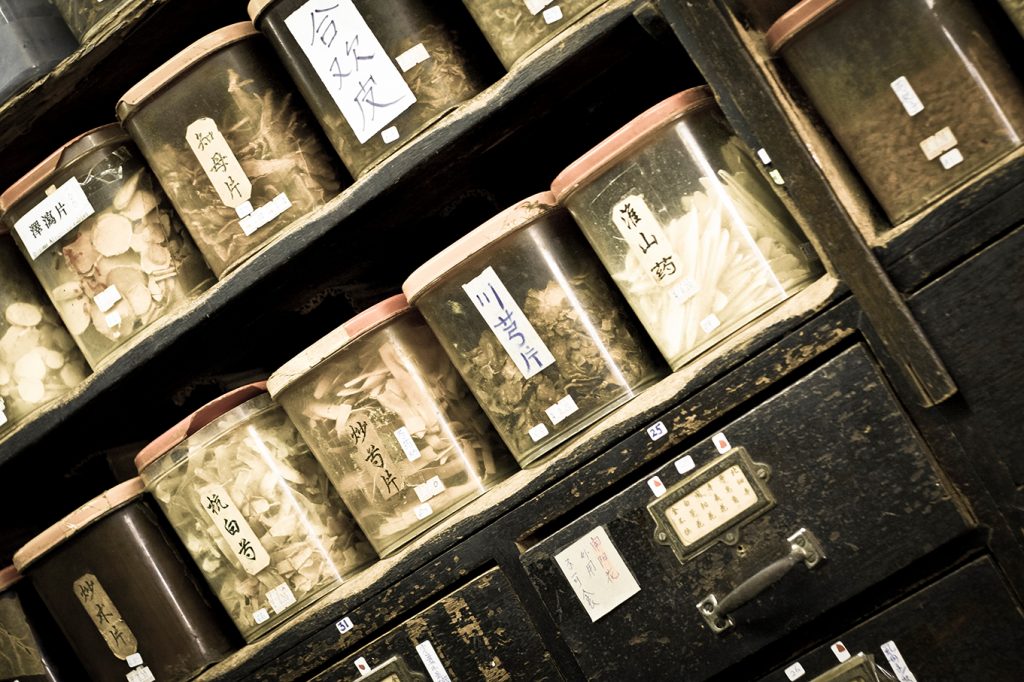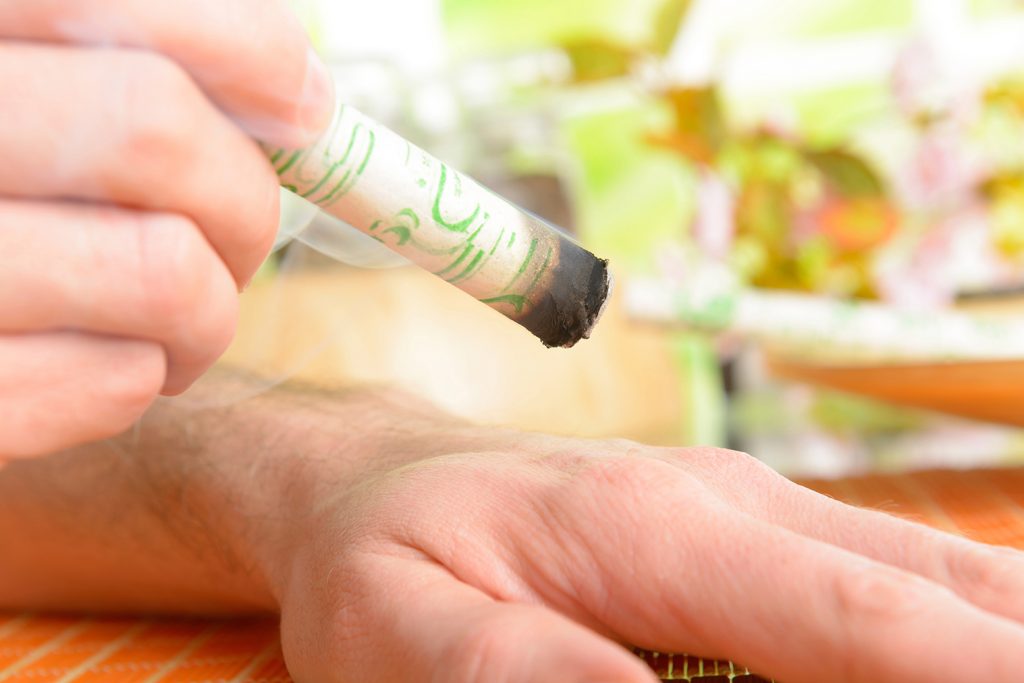
Traditional Chinese medicine (TCM) is a group of practices that are referred to collectively, developed in China these practices are based on a tradition of more than 3000 years, including herbal medicine, acupuncture, massage (Tuina), exercise (qigong), and dietary therapy. TCM emphasises prevention and food is seen as medicine – many Chinese herbs are interchangeable and included in regular daily Chinese diets. The TCM Materia Medica includes fish products (25%), shrubs (23%), herbs (19%), bird products (17%), mammal products (10%), reptile products (4%) and minerals (2%). Today TCM is primarily used as a complementary medicine. TCM is widely used in China within the Chinese hospital system in combination with Western Medicine.
Many people in the western world are aware of the benefits of acupuncture – mainly because of Richard Nixon’s visit to China in 1972, where he witnessed open heart surgery being performed in a Chinese hospital using acupuncture for pain management.
Since the 1970’s the benefits of acupuncture with regards to pain and injury management has become widely known, however what is less known is the second, equally or more effective, component of Chinese medicine which is the preparation of herbal formula for internal and external use. Due to the complexity most TCM practitioners do not practice all modalities such as massage (Tui na), exercise (qigong), and dietary therapy together with acupuncture and Chinese herbal medicine.
TCM is also now starting to be accepted throughout the world as a major contributor to family healthcare. In Australia there are 3 major Universities offering TCM as a Bachelor of Health Science. There are also numerous colleges offering this degree course. Two States in Australia (Victoria, New South Wales) now require TCM practitioners to apply for registration similar to other medical professions.
A snapshot of conditions typically treated by TCM are: Insomnia and fatigue, Loss of appetite and common, digestive disorders, Constipation and diarrhoea, Irritable bowel syndrome, Common cold and influenza, Chronic headaches, Skin disorders, Fluid retention, Anxiety, depression and stress, Allergies, Rheumatoid and osteoarthritis, Premenstrual syndrome and painful menstruation, Excessive menstruation, Infertility, Impotence and prostate disorders and disorders associated with menopause.
The World Health Organisation acknowledges scientific evidence of TCM’s effectiveness for: Pain (Head and face, Locomotor system, Gout, Biliary and renal colic, Traumatic or postoperative pain, Dentistry, Childbirth, Surgery). Infections, Neurological disorders, Respiratory disorders, Digestive disorders, Blood disorders, Urogenital disorders, Gynaecological and obstetric disorders, Blood disorders, Urogenital disorders, Gynaecological and obstetric disorders, Cardiovascular disorders, Psychiatric disorders and mental disturbances, Paediatric disorder, Disorders of the sense organs, Skin diseases (Dermatitis, Acne, Psoriasis), Cancer.
How does Chinese Medicine work – what’s involved?
TCM uses a system that is different from Western Medicine however they are uncannily similar in many ways too. TCM uses metaphors (Yin, Yang, Five Phases, Qi) to differentiate complex disease patterns (group of symptoms) in a simple way. TCM treats the root of a disease and refers to symptoms as branches. Hence two people may display similar symptoms but have different causes for their disease. Western Medicine reduces disease patterns into simplistic individual symptoms and treats the symptom as the actual disease and over-looks the root cause. The western allopathic model of medicine uses one treatment for all symptoms.
Generally speaking, Western Medicine certainly has its benefits and is good for treating acute illness while Chinese Medicine is good for treating chronic illness or general health. Western Medicine does work faster but there are sometimes severe side effects. If diagnosed correctly Chinese Medicine can work quickly in some scenarios but it can also take up to 6-8 weeks before a person feels any benefit – depending upon the person’s condition. A Chinese Medicine consultation will involve the practitioner looking at the patients tongue and also feeling the patients pulse as well as taking notes and making other clinical observations.
In an article such as this it is impossible to explain TCM’s complexities however I will attempt to give a precursory explanation of the metaphorical diagnostic system that’s incorporated with TCM.
The concepts of yin and yang
Yin and yang are ancient Chinese concepts. They represent two abstract and complementary aspects that every phenomenon in the universe can be divided into. The concept of yin and yang is also applicable to the body (organs, tissue, blood etc). Yin and yang are seen as phenomena where overabundance or deficiency produces characteristic symptom combinations.
Qi and the body’s vital energy
TCM holds that the body’s vital energy (chi or qi) circulates through channels, called meridians, that have branches connected to bodily organs and functions. TCM distinguishes many kinds of qi that are associated with different organs, tissue, blood etc.
Five Phases theory
Five Phases sometimes also translated as the “Five Elements” theory, presumes that all phenomena of the universe and nature can be broken down into five elemental qualities –wood , fire, earth, metal, water. These qualities govern different organs in the body:
Some of the Chinese Medicine Treatment Techniques a TCM practitioner may employ are:
Acupuncture
A treatment to ease pain or illness by inserting needles into points on the body.

Electro Acupuncture – Utilises electric stimulation of the needle to increase therapeutic benefits of treatment.
Auricular (e ar) Acupuncture – mostly used for treating addictions like alcohol, drugs and smoking but this acupuncture is very effective for treating disease also.
Fire needling – Hot acupuncture needles (heated in fire) are uses on points of pain and or various selected acupuncture points.
Cupping
A technique of stimulating acupuncture points with the suction of a bamboo or glass cup.
Blood letting
Piercing a vein or small artery at the tip of the body-finger tips, toes, or top of the ears.
Chinese herbs
Usually many herbs combined in a formula (raw herbs, pills or powder).

Moxa
Often used in conjunction with acupuncture, consists of burning dried Chinese Mugwort on acupuncture points.


